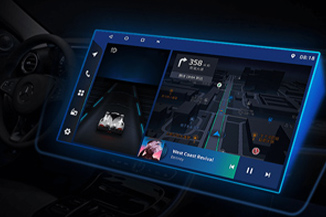Publisher: Supplier of LED Display Time: 2022-03-01 15:02 Views: 1652
We always confuse augmented reality and virtual reality, they have similarities and differences. Today, let LCF send a small editor to explain and study some AR and VR use cases.
Augmented reality (AR) and virtual reality (VR) are often talked about together, which makes sense for the market to measure these related capabilities. “AR and VR do have a lot in common,” said AR/VR expert and Augmented World Expo director Tom Emrich. “In future headsets, these technologies will feel more like two sides of the same coin. The same Devices will allow us to experience augmented or virtual reality, depending on what is needed in the real world."
However, AR and VR today are two very different things, more like cousins than twins. Leon Laroue, technical product manager of Epson's augmented reality solutions, said that since VR can be deployed in multiple ways and has a larger coverage, it is more specific and separated from reality compared to AR, while AR is augmented reality. "For someone who's never actually seen an AR or VR device, it's easy to assume that everything is VR."
AR allows users to experience the real world, which has been digitally enhanced or augmented in some way. VR, on the other hand, takes the user away from the real world and replaces it with a fully simulated experience.
Since VR requires full immersion, VR devices completely shut out the physical world. On the other hand, the lenses of smart glasses with augmented reality are transparent. Understanding these differences is critical to determining the best use case for each situation.
Because AR and VR are not identical, they require business leaders to develop different strategies for implementing these technologies in their organizations. Let's clarify the differences and see some practical examples.

AR and VR application scenarios
At a high level, AR applications are best suited for users that need to be connected and used in the real world. Some AR enterprise solutions include remote assistance, on-the-job training, remote collaboration, and computer-assisted tasks.
In the research of these two technologies, AR is very suitable for industrial scenarios. For example, when skilled field workers encounter intractable difficulties and need specific and complex guidance, remote experts can assist remotely through AR technology; companies facing knowledge gaps and loss of expertise as workers retire can digitally capture this knowledge and share it with less experienced workers for guidance through AR technology.
VR applications are best suited for simulated or fully immersive experiences: consider remote scenarios combined with 3D elements, virtual training and virtual tours. For example, the Johnson & Johnson Institute has developed virtual reality software to improve the training of orthopaedic surgeons and nurses. Walmart uses VR to create unlikely situations (such as weather emergencies) and common situations to give employees a first-hand training experience without disrupting operations.









